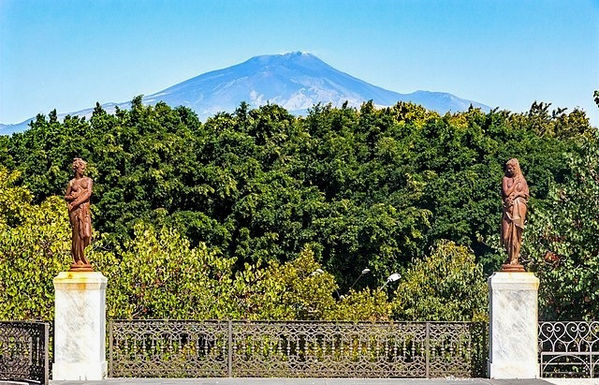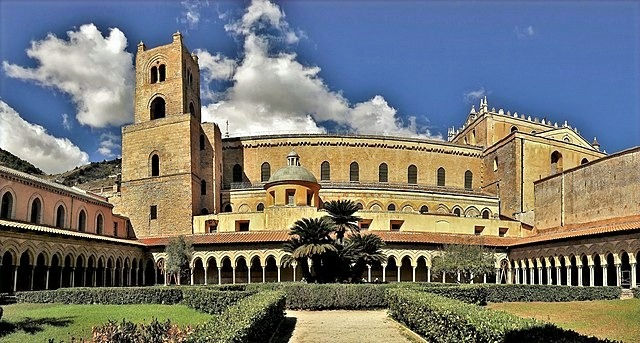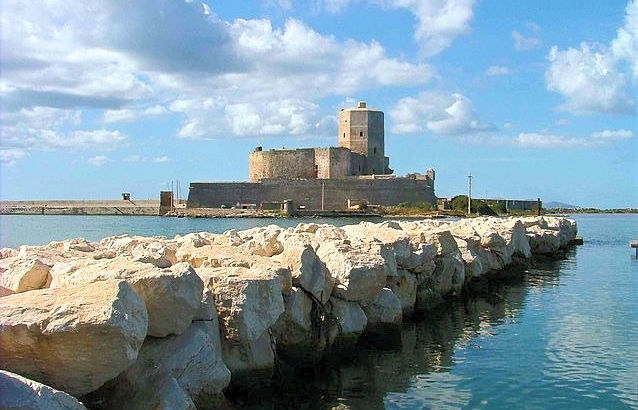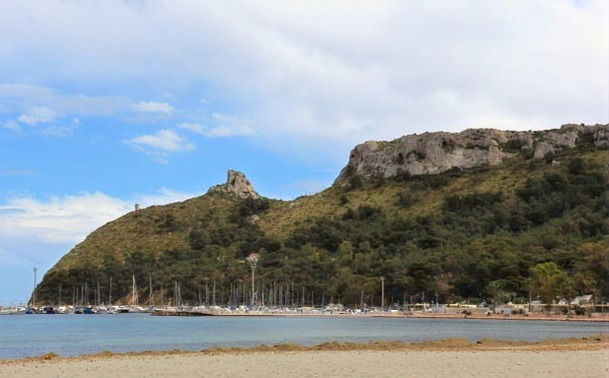

The Islands
Sicily/ Aeolian Islands/ Sardinia/ Erba/ Pontine Islands
Italy is a country in the Mediterranean area surrounded by the Tyrrhenian, Ionian and Adriatic Seas. There are over 450 islands, large and small, including sea, lake and river islands.
The biggest island is Sicily and Sardinia.
Each island is known for its diversity , each has its own charm and its traditions. Whether you are in search of Italy’s rich past, distinguished culture, pure-white secluded beaches or glamorous resorts, there’s absolutely something for everyone on the dazzling Italian shores. Besides islands in the Adriatic, Mediterranean and Tyrrhenian, you’ll also find fascinating islands dotted around lakes and lagoons, and even an island right in the heart of Rome.
There are several UNESCO World Heritage Sites in Sicily and Sardinia, namely:
Sicily
-
Arab-Norman Palermo and the Cathedral Churches of Cefalú and Monreale
-
Isole Eolie (Aeolian Islands)
-
Late Baroque Towns of the Val di Noto
-
Mount Etna
-
Syracuse and the Rocky Necropolis of Pantalica
-
Villa Romana del Casale
Sardinia
-
Su Nuraxi di Barumini
By milito10 - Pixabay
Sicily
Sicily is the largest island in the Mediterranean Sea and arguably one of the most beautiful islands in Europe. The sun-kissed coastline is dotted with powdery sand and pebble coves beaches, volcanic rock formations, towering cliffs and touched by three seas, while the inland is laden with lush valleys, gardens, idyllic ancient mountain villages with their preserve age-old traditions, vast steep sloped of orange groves, and the mighty Mt Etna, Europe’s largest active volcano, still casting black ash over the island!
Besides beautiful nature, Sicily also has a rich and unique cultural since it has been dominated by Arabs, Romans,Greeks , Byzantine and the Norman. This led to many architectures, arts and cuisines. Its delightful cuisine captivates the world with its distinguished aromas and flavors, with some of the best food you’ll ever taste.
Sicily’s most appealing destinations include the vibrant, Arabian-Norman city of Palermo; elegant Catania; the historic city of Syracuse, Agrigento and the Valley of the Temples; the delightful Taormina and Cefalú. The pebbly-sandy beaches below Taomina at Giardini Naxos, Mazzarò and Letojanni are particularly popular and enchantingly beautiful.
The island’s main attraction, The Etna volcano it should definitely be included in your tour in Sicily.
Palermo
Boasting fantastic Byzantine mosaics, amazing baroque churches and Gothic palaces, Palermo, the capital of Sicily, is declared as a UNESCO World Heritage Sites in 2005 for its Arab-Norman Palermo monuments. It is an ideal place to start your exploration in Sicily.
Arab-Norman Palermo includes a series of nine civil and religious structures dating from the era of the Norman kingdom of Sicily (1130-1194). Seven out of nine are located in Palermo. These monuments comprise of two palaces, three churches, a cathedral, a bridge, as well as the cathedrals of Cefalú and Monreale. These monuments are a myriad of different architectural styles between Western, Islamic and Byzantine cultures. The structures and decoration are truly amazing! Each illustrates important aspects of the multicultural Western-Islamic-Byzantine syncretism that characterized the Norman kingdom of Sicily during the 12th century.
These monuments include:
-
The Norman Palace (Palazzo dei Normanni) and The Palatine Chapel in the Norman Palace (Cappella Palatina)
-
Church of St. John of the Hermits (San Giovanni degli Eremiti)
-
Church of St. Mary of the Admiral (Santa Maria dell'Ammiraglio), also known as Martorana
-
Church of Saint Cataldo
-
Cathedral of Palermo
-
The Zisa Palace (La Zisa)
-
Admiral’s Bridge (Ponte dell'Ammiraglio)
-
Monreale Cathedral
-
Cefalù Cathedral
Besides the UNESCO Sites, there are some interesting attractions not to be miss. The Fontana Pretoria, a fountain with forty-eight statues, twelve Olympians from ancient Greek Mythology including Zeus, Poseidon, Apollo and Ares. Nearby, is the Quattro Canti meaning ‘Four Corners’ , an open square with marble columns and statues of important Italian citizens and rulers from Palermo. Next, the impressive and elegant Teatro Massimo, one of the most representative jewels of the city, and third in Europe, after the Paris Opera and the Staatsoper in Vienna. A visit to the Ballaro Market, main food market, is a great occasion to soak in local life! Here, you’ll find delicious fresh fruits, vegetables, cheese, pastries and of course fish, all at great price!
Agrigento and The Valley of the Temples
The Valley of the Temples, next to the city of Agrigento, is Sicily best-known archaeological site. 8 temples are visible in the valley but the 2 best preserved are undoubtedly the temple of Concorde and the temple of Hera. It was included in 1997 in the UNESCO World Heritage List.

By DonnaSenzaFiato -Pixabay
Catania
Catania, the 2nd largest city in Sicily after Palermo, is located at the foot of the Etna. A triumph of Baroque style, this city boasts It is part of UNESCO World Heritage List under Late Baroque Towns of the Val di Noto.
Take a walk around the Piazza del Duomo to see the Palazzo Biscari, most important palace in the city. It represents, the most beautiful example of Catanese baroque architecture. The Elephant’s Fountain (fontana dell’ elefante). This fountain depicts an elephant carved in black lava, topped by an Egyptian obelisk. Behind the fountain, there is the Catania Cathedral, in white marble with beautiful exterior facade, dedicated to the patron saint of the city, Saint Agatha.
Visit the gardens of Villa Bellini, located in Via Etnea, the main street of Catania or do some shopping and enjoy a cup of espresso ! On a clear day, Mt. Etna will draw your gaze from the distance!
Next important street is Via Crociferi, known as “the Church Street”, dotted with many churches. The most outstanding building is former Benedictine Monastery, which now houses the 2nd largest university in Europe.
Cefalú
Cefalù, a charming beach town on the Tyrrhenian Sea, is one of the most beautiful and busiest holiday destinations. With golden sandy cove and calm crystalline water, its is one of the most sought after cities in Sicily.
Nevertheless, Cefalù is not only sea and sun, its historic center still conserves important symbols of the past., You will be enchanted by the majesty architecture of the Cathedral, from marble statues to its world-famous Byzantine mosaics standing out from their golden background. It is part of Arab-Norman Palermo UNESCO World Heritage Sites.
You can smell the sea breeze in each corner of its streets and find out its history strolling around the megalithic walls, with its pretty narrow cobblestone alleys, colorful piazzette and fine architecture, flanked by numerous bars, cafés and restaurants. The walls were built on the cliff to protect the town from any attack from the sea.
Enna
Located in the heart of Sicily, Enna is the only town without access to the sea. However, it has the most lakes, including Lake Pergusa, the only natural lake of the island. The highest town of Italy, perched on a promontory at 970 meters above sea level, Enna has retained its typical charm and offers several points of interest. Via Roma, the city historic center, where you can admiral the Enna’s Duomo. The Lombardy castle, where you can admire wonderful panoramas of the whole of Sicily and Etna. Take a stroll along Lake Pergusa, a natural lake in the Sicilian hinterland, an ideal resting place for thousands of aquatic birds in transit to Africa.
Enna is the gateway to the town of Piazza Armerina and the UNESCO World Heritage Sites Villa Romana del Casale.
Erice
A charming medieval village pearching on top of Mount Erice, overlooking the city of Trapani, the Aegadian Islands. There are two castles that remain in the city: Pepoli Castle, which dates from Saracen times, and the Castello di Venere ("Venus Castle"), symbol of the city, dating from the Norman period, built on top of the ancient Temple of Venus, where Venus Ericina was worshipped.
Erice is famous for numerous churches, indeed it was known as the city with a hundred churches. The main churches are the Church of Sant’Albertino degli Abbati, the Church of San Martino, in Norman style, and the Mother Church, the oldest church dedicated to the cult of Santa Maria Assunta. One of the most beautiful villages in Italy, its historical centre is largely intact, clean and well-kept.
Mount Etna
Mt Etna, an extraordinary nature reserve, has been included in 2013 as a World Heritage site by UNESCO as one of the “most active and emblematic volcanoes in the world”. Mount Etna, the highest active volcano in Europe, with its mass dominating the whole of Sicily. Its spectacular eruptions, the fiery lava flows, has always aroused the interest of scientists and the curiosity of visitors from all over the world. Guided tour with our hiking guides to the crater can be arranged .

By Hein56didden - wikimedia.org, CC BY-SA 3.0
Monreale
The picturesque village of Monreale, perching on the hillside of Mount Caputo, overlooking the coast of Palermo, and the fertile Conca d'Ora valley with its groves of olive, orange and almond trees. The cathedral is best known for its very impressive Byzantine mosaics, dating from the 8th century. It was listed as UNESCO World Heritage Sites together with Arab-Norman Palermo. Strolling around the main square Piazza Vittorio , enjoy the charms of narrow alleyways and medieval buildings, with many restaurants offering both traditional Sicilian cuisine and also cookery of Arab origins.
Piazza Armerina
Piazza Armerina, a splendid art city boasts monuments that tell its glorious past.
The Villa Romana del Casale is a large and elaborate Roman villa , originally belong to a powerful Roman family during the 4th Century A.D. Excavations have revealed that the villa is one of the richest, and largest varied collections of beautiful Roman mosaics in the world. Due to the landslide and floods that covered the remains, it is in excellent state of preservation, for which the site has been designated as a UNESCO World Heritage Site in 1997.

By AlMare of photograph taken by Disdero-wikimedia.org-CC By-SA2.5

By José Luiz Bernardes Ribeiro, wikimedia.org CC BY-SA 4.0
Scala dei Turchi
The Scala dei Turchi is another must-see if your trip to Sicily takes you in this region!
This white limestone cliff is famous for its particular shape: it looks like erosion has carved steps! Added to its charm, is the turquoise color of the sea and the fine sand beaches that border it. It offers one of the most beautiful sunset view.

By DonnaSenzaFiato - Pixabay

By davide ragusa - Unsplash
Syracuse
Syracuse is a destination no traveler should pass up. The city is especially renowned for its charming old town, and for the Neapolis Archaeological park.
The city conserves ancient vestiges in every niche and corner, from Greek classical antiquity to Baroque splendors, all within a landscape of enchanting beauty. It features a huge Greek Theater with a capacity of more than 20 000 people and a huge Roman amphitheatre almost completely carved out of the rock!
Necropolis of Pantalica
The Necropolis of Pantalica contains over 5,000 tombs cut into the rock near open stone quarries, most of them dating from the 13th to 7th centuries BC and the remains of the Anaktoron Prince’s Palace during the Byzantine era. It was made a UNESCO World Heritage Site in 2005.
Taomina
Taormina 'the Mediterranean Pearl', is located on a natural terrace sheer above the Ionian sea. This charming small town offers great views over the sea and Mt. Etna. It is recommended a walk in the Villa Comunale, that offers a typical Mediterranean vegetation and a stunning view over the startling blue sea. Next, Taormina Greek Theater, one of the most well preserved in the world!
The coast offers many charming sandy beaches lapped by crystalline water. Giardini Naxos , Mazzarò and Isola Bella are the most frequented.
Trapani
Trapani a city located around Palermo. The Erice medieval village, perched on a rocky cliff dominating the Trapani, offers amazing views over the city and the sea, up to the Aegadian Islands. Segesta temple, another attraction worth seeing, is one of the most popular archaeological site of Sicily. It’s the gateway to take the ferry to visit the Aegadian islands.
Trapani and Paceco Salt Pans Nature Reserve
The windmills, a symbol for the Reserve, were once used to process the salt. The renovated salt mill now serves as a museum. Trapani and Paceco Salt Pans Nature Reserve is a multicoloured place with breath-taking landscapes, an oasis of richness for the local area. The salt pans and their mills are seen on many postcards. A real paradise for Nature photographers!
Remember to take home some of this renowned salt, used by the best Sicilian chefs.
Val di Noto
Located in southeastern Sicily, Val di Noto (the Noto Valley) – with its eight gorgeous late-Baroque cities – became one of the UNESCO World Heritage Sites in 2002.
These eight cities were destroyed during an earthquake in 1693. Each of these cities were rebuilt in magnificent style that represents the high level of architectural and artistic achievement of what is known as Sicilian Baroque. These cities not only maintain the late Baroque style of the era, but also illustrate unique town planning.
The eight cities are Caltagirone, Militello Val di Catania, Catania, Modica, Noto, Palazzolo Acreide, Ragusa and Scicli.
Palaces, churches and Baroque cathedrals, architecture lovers will really be happy! Enjoy a walk in Sicily’s flamboyant past!
Zingaro Nature Reserve
It is undoubtedly one of the most admired natural gems in Sicily. The Zingaro Nature Reserve is easily accessible from Scopello or Trapani. You will be delighted by the beautiful panoramas, with the path overlooking the enchanting blue bays. There, you can experience the sea as it was centuries ago.

Grotto of Uzzo
By Christof Halbe-wikimedia.org,CC0

By Daniele Pugliesi - wikimedia.org, CC BY-SA 4.0
The Aeolians Volcanic Islands
The Aeolian Islands are located in Northern Sicily. This volcanic archipelago consist of seven exquisite islands - Lipari, Panarea, Vulcano, Stromboli, Salina, Alicudi and Filicudi, in addition to smaller islets and giant boulders. The best known and therefore the most visited are Lipari, Salina, Vulcano and Stromboli. Each islands has its own charm and atmosphere. They all emerge from an uncontaminated sea, created by still-active volcanoes (Stromboli and Vulcano), and blessed by a savage beauty. The wild landscape is rocky, with steep cliffs overlooking the sparkling sea. The Aeolian Islands are included in the UNESCO World Heritage Sites list for its undisputed beauty and the uniqueness of its natural landscape

Stromboli Volcano- one of the three active volcanoes in Italy
By Andrea Corsi - Pixabay
_edited.jpg)
Lipari Island Old Town
By kuhnmi - wikimedia.org, CC BY 2.0,
Sardinia
Sardinia is the second largest island in Italy and one of Italy’s most seductive destinations. It is mainly mountainous, but without high peaks. This picturesque province never fails to capture the heart of travellers with its powdery white sand beaches kissed by dazzling aquamarine waters, and the handsome rock formations, that create a spectacular coastal scenery. There is a endless list of places to discover in Sardinia.
Cagliari, the capital of Sardinia, boasts a long dazzling and extensive coastline.
Alghero
Alghero is the most characteristic tourist center of the western coast of northern Sardinia. This city attracts travellers with its solitary coves, white sandy beaches and crystalline sea.
Alghero still shows traces of its Catalan past, with buildings in Catalan-Aragonese style. The city boasts a striking Gothic-style historic center, known as Alguer Vella, with the Cathedral of Santa Maria and the impressive Sant Miquel's Dome, the Guillot Palace and the 14th-century Church of San Francesco, the Coral Museum and a long natural bay overlooking the emerald sea. At Porta Terra tower, you can climb up for fantastic views across Alghero.

Bastion of the Maddalena
By G Da-wikimedia.org CC BY-SA 3.0
Cagliari
Cagliari, the capital of Sardinia is the most important economic region of the island. As a tourist destination, Cagliari benefits from a host of fantastic historical buildings such as the Duomo and Bastione San Remy, but also from some beautiful parks, gorgeous stretches of coastline, and its well-developed Marina. As a coastal town, it’s easy to indulge in the eternal joys of sunshine, beaches, bars and great seafood. Some of the popular beaches are Poetto, long stretch of fine sand that starts in Sella del Diavolo (Devil’s Saddle), one of the landmarks of Cagliari, and goes all the way to Quartu Sant’Elena. It is extremely photogenic!
Costa Smerelda
The Emerald Coast (Costa Smerelda) with its shimmering aquamarine water of Spiaggia del Principe and Spiaggia Romazzino, is a popular destination for royals, celebrities , moneyed wannabes soaking in the sun.
Cala Gonone
Cala Gonone is the starting point for marvellous excursions. You can go on beautiful excursions by boat to the Gulf of Orosei, Bue Marino caves at Cala Luna or by jeep to the archaeological sites of the Supramonte: Tiscali, Serra Orrios, Gorropu Gorge and to the Tombs of the Giants. Or enjoy a walk along the coast, where nature is still intact.
Gorropu Gorge
The Gorropu Gorge known as Europe’s Grand Canyon has walls of rock up to 450 metres high and a deep clift dug by thousand’s of years of erosion by the waters of the Flumineddu River. The bottom of the gorge is full of big white levigated rocks. It is located between Ogliastra and Barbagia. It is perfectly embedded between the mountains and the sea and it’s such a spectacular place that you can’t afford to miss during your holiday.

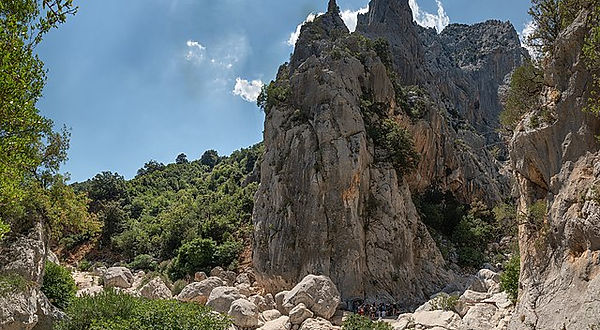
By Giorgio Galeotti - wikimedia.org, CC BY 4.0
Gulf of Orosei
Gulf of Orosei is one of the most uncontaminated and wild shores in Sardinia, a real paradise for the nature lovers that offers some of the most beautiful and unspoiled corners of the island. Wild secluded beaches, limestone gravel, coastal caves scenery and amazing clear sea with shades ranging from green to turquoise- perfect for snorkelling, climbing, bathing and admiring. Cala Goloritzè, Cala Luna and Cala Mariolu are some of the idyllic bays along the Gulf.
Maddalena Archipelago
The Maddalena Archipelago is a group of seven islands and some small islets in the Strait of Bonifacio between Corsica (France) and north-eastern Sardinia . The seven major islands are Maddalena, the most important, Caprera, Santo Stefano, Spargi, Budelli, Santa Maria and Razzoli. The whole archipelago makes the territory of the La Maddalena, and are surrounded by pure and pristine sea. Its crystal clear waters will leave you breathless!
Serra Orrios
Surrounded by rugged hills, millennial olive trees and Mediterranean vegetation, Serra Orrios is one of the best preserved nuragic complexes in Italy. The village consists of a hundred circular huts, built with a base of rows of stones and originally covered with branches. Here, you can journey through time to a village-sanctuary of Bronze age,, built entirely of basalt blocks.

Nuragic village in Serra Orrios
By Bruno Barral - wikimedia.org, CC BY-SA 3.0
Su Nuraxi di Barumini
Visit the UNESCO-listed Su Nuraxi di Barumini, archaeological site in Barumini, to see an extraordinary example of a Nuragic village. The Su Nuraxi is the finest and most complete example of the unique form of Bronze Age defensive complexes known as nuraghi.
The nuraghi are defensive towers found throughout the island and are marked by their truncated cone shape; they are constructed in huge stone blocks according to the dry stone technique.


By Olaf Tausch - wikimedia.org,CC BY 3.0
Tiscali
Tiscali is another beautiful Nuragic villages, hidden in a mysterious cave inside Mount Tiscali, where time seems to have stopped. It consists of about fifty huts of different shapes, built on the sides of the sinkhole against its walls. In the centre of the village there is an ancient wood full of mastic trees and holly oaks. Their origins are mysterious; the building technique is different from those of other Nuragic sites. It was probably inhabited in pre-Nuragic ages.

By Roberto Mura -wikimedia.org, CC BY-SA 4.0
Tomb of Giant
A four thousands year old prehistoric monumentt, the Tomb of Giant, the name was given by local people and archaeologists to the Sardinian megalithic gallery grave built by the Nuragic civilization.

By Michel Royon,-wikimedia.org,CC BY3.0
Elba
Elba is best known as the island on which Napoleon was first exiled. It is the largest and most popular island in the Tuscan Archipelago, and the third largest island in Italy after Sicily and Sardinia, lapped by the Tyrrhenian Sea and the Ligurian Sea.
Being the largest protected marine park in Europe, it’s arguably one of the best destination for scuba diving and snorkeling. The main town Portoferraio is a colourful and attractive harbour town, with an authentic treasure of castles, villas and picturesque alleys. Visit the house of Napoleon, where he stayed in 1814 for a year. Pristine beaches include Marina di Alberese.
If you are hiking enthusiasts, the Stone Monsters will be just perfect for you. The Stone Monsters are natural stone formations, that have been formed over the centuries by atmospheric agents, some of which can even reach ten meters in height, rise along the coast and the mountains of Elba Island.
Ponza
If you’re travelling to the Eternal City, Ponza is near Rome offer a break from the hustle and bustle, and get you well off the beaten tourist trail.
Ponza, may not be as popular as other islands in Italy, but don’t let that fool you. It is a beautiful upcoming tourist destination that is worth a visit. You will be surprised by some of the unique things to do and places you can explore at this hidden destination.
The Pontine Archipelago consists of two islands off the west coast of Italy, Ponza and Ventotene. Encircled by the translucent seas, soaring cliffs and hills feature whitewashed buildings and villas of every colour. Roman ruins and cave tombs dot the scenery, highlighting a long and intriguing history.
Make sure to visit Grotte di Pilato and explore the Punta Incenso Park.

By tittimi -wikimedia.org CC BY 2.0


















